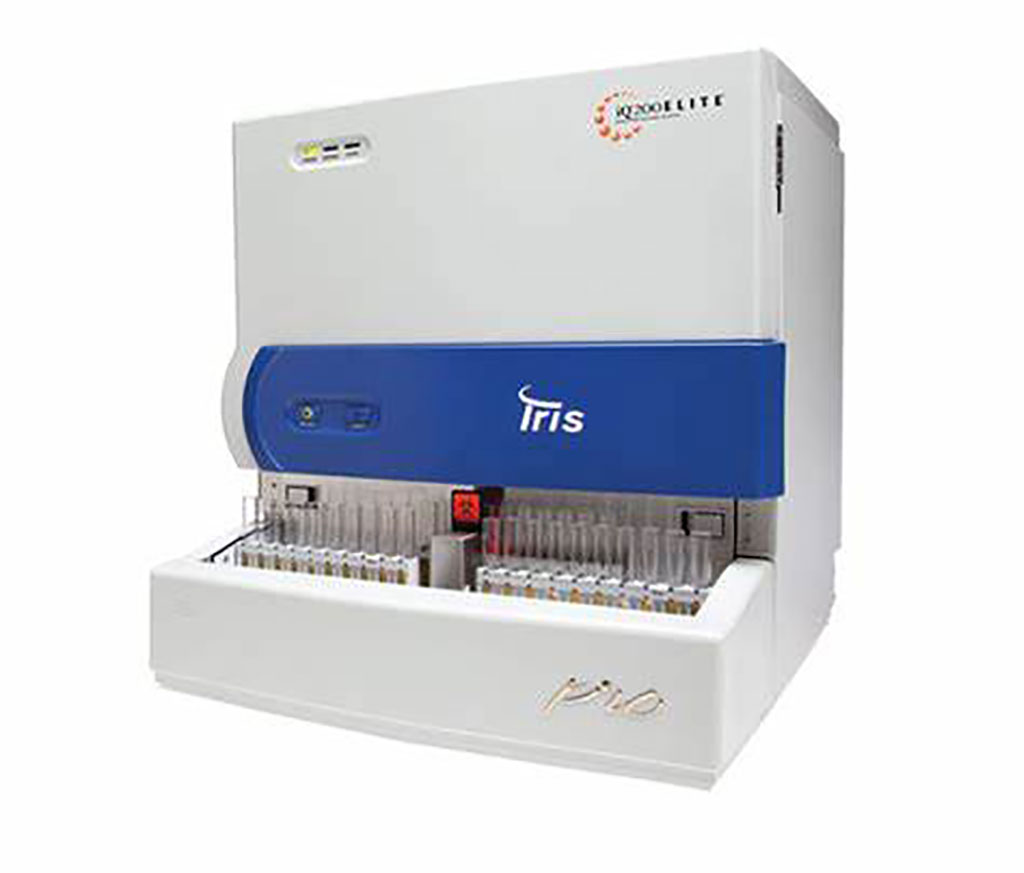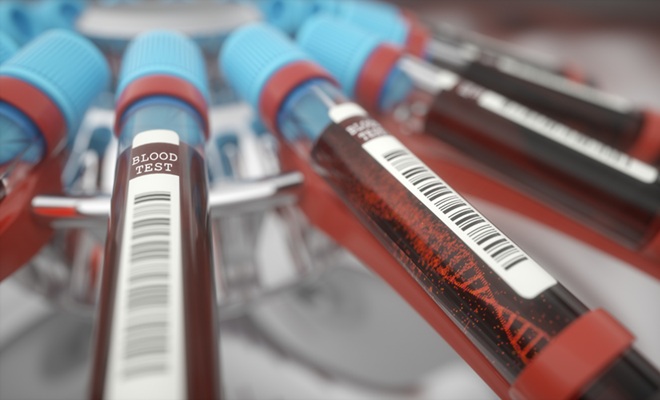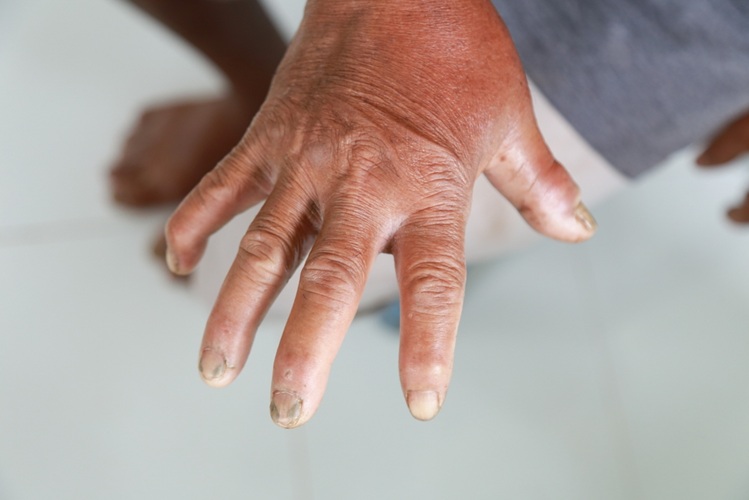Faster Method Diagnoses Pediatric Urinary Tract Infections
|
By LabMedica International staff writers Posted on 01 Aug 2022 |

Urinary tract infections (UTIs) affect the urinary tract, including the bladder (cystitis), urethra (urethritis) or kidneys (kidney infection). UTIs may be treated with antibiotics, but they're not always needed.
UTIs are common in children and when left untreated can cause acute distress, septic shock, and even kidney damage. The gold standard for diagnosing the condition, urine culture, is slow and labor-intensive for laboratory staff, leading doctors to sometimes prescribe antibiotics inappropriately before getting results, thus contributing to the rise of antibiotic resistance.
Biomedical Scientists at the Nationwide Children's Hospital (Columbus, OH, USA) investigated the association between urinalysis results and those of concurrent urine cultures, and to assess the accuracy of a published prediction model for the results of urine culture in a pediatric population. The study was a retrospective chart review of 5,535 children who previously underwent both urinalysis and urine culture for UTI and carried out at the hospital from January 2019 to December 2020. The study population had a median age of 7 years (mean = 9), was 69% female, and of those with positive urine cultures, 85.2% were female.
Dipstick and microscopic sediment urinalysis were performed on an iQ200 Automated Urine Microscopy Analyzer (Beckman Coulter, Brea, CA, USA). Positive urine culture was defined as ≥50,000 colony-forming units/mL of a urinary pathogen. To evaluate their method's performance in children, the team used it to analyze data from the medical records of the children, they entered their age, sex, risk for UTI, and urinalysis results into their test's algorithm to see how accurately it predicted their urine culture results. Six variables were selected for the prediction model UTOPIA equation: ×1:age UTI risk, ×2:sex, ×3:nitrite, ×4:leukocyte esterase (LE), ×5:white blood cell count (WBC) and ×6:grade of bacteria with ×2-×4 and ×6 being categorical.
The investigators reported that the UTOPIA value exhibited an area under the ROC curve value of 0.825, which is significantly higher (P<0.001) than the individual components for ages 0.546 (0.52-0.57), sex 0.575 (0.56-0.59) nitrite 0.618 (0.60-0.63), LE 0.757 (0.74-0.78), the grade of bacteria 0.664 (0.64-0.69), and the WBC count 0.776 (0.75-0.80). The closer the ROC value was to 1, the more accurate the testing strategy.
Jingcai Wang, MD, PhD, CC(NRCC), SH(ASCP)MLS, a Certified Medical Laboratory Scientist and senior author of the study, said, “The test represents a simple way to predict urine culture results. It can potentially reduce unnecessary urine cultures, save money, and reduce use of unnecessary antibiotics in children.”
The authors concluded that the predictive model UTOPIA value demonstrated good diagnostic performance for predicting urine culture results and possibly reducing unnecessary urine culture and antibiotic use in a retrospective pediatric population. The study was presented on July 27, 2022 at the AACC 2022 meeting held in Chicago, IL, USA.
Related Links:
Nationwide Children's Hospital
Beckman Coulter
Latest AACC 2022 News
- AACC 2022 Review: International Meetings Rebound After Suffering Long COVID Hiatus
- Tianlong Showcases Integrated PCR Lab Solutions at AACC 2022
- Cellavision Introduces New Workflow Solution for Low-Volume Hematology Labs at AACC 2022
- Advanced Instruments Introduces New Automated Osmometer at AACC 2022
- Innovative Smartphone and AI-Based Tests Featured at AACC 2022
- New Tests Presented at AACC 2022 to Solve Challenges in Children's Healthcare
- 10-Minute Sepsis Risk Stratification Test Introduced at AACC 2022
- New System Combining DNA/RNA Extraction and Smart PCR Setup Launched at AACC 2022
- Novel Small Volume Blood Collection Device Launched at AACC 2022
- AACC Disruptive Technology Award Finalists Tackle Cancer, Women's Health, and STDs
- Meridian Demonstrates State-of-the-Art Urea Breath Test System at AACC 2022
- Nikon Instruments Displays Latest Clinical Pathology Products at AACC 2022
- Seegene Showcases Latest Molecular Testing Solutions at AACC 2022
- Werfen Introduces New Acute Care Diagnostic Products for CVOR at AACC 2022
- PerkinElmer Demonstrates Vanadis NIPT Screening Platform Featuring Groundbreaking cfDNA Technology
- Roche Showcases Latest Innovations in Diagnostic Solutions at AACC 2022
Channels
Clinical Chemistry
view channel
New Method Uses Pulsed Infrared Light to Find Cancer's 'Fingerprints' In Blood Plasma
Cancer diagnoses have traditionally relied on invasive or time-consuming procedures like tissue biopsies. Now, new research published in ACS Central Science introduces a method that utilizes pulsed infrared... Read more
Carbon Nanotubes Help Build Highly Accurate Sensors for Continuous Health Monitoring
Current sensors can measure various health indicators, such as blood glucose levels, in the body. However, there is a need to develop more accurate and sensitive sensor materials that can detect lower... Read moreMolecular Diagnostics
view channel
Gene-Based Blood Test Accurately Predicts Tumor Recurrence of Advanced Skin Cancer
Melanoma, an aggressive form of skin cancer, becomes extremely difficult to treat once it spreads to other parts of the body. For patients with metastatic melanoma tumors that cannot be surgically removed... Read more
Blood Test Could Identify Patients at Risk for Severe Scleroderma
Systemic sclerosis, also known as scleroderma, causes the hardening of the skin and connective tissues. In many cases, the disease can also damage vital organs, including the heart, kidneys, lungs, and... Read moreHematology
view channel
New Scoring System Predicts Risk of Developing Cancer from Common Blood Disorder
Clonal cytopenia of undetermined significance (CCUS) is a blood disorder commonly found in older adults, characterized by mutations in blood cells and a low blood count, but without any obvious cause or... Read more
Non-Invasive Prenatal Test for Fetal RhD Status Demonstrates 100% Accuracy
In the United States, approximately 15% of pregnant individuals are RhD-negative. However, in about 40% of these cases, the fetus is also RhD-negative, making the administration of RhoGAM unnecessary.... Read moreImmunology
view channel
Stem Cell Test Predicts Treatment Outcome for Patients with Platinum-Resistant Ovarian Cancer
Epithelial ovarian cancer frequently responds to chemotherapy initially, but eventually, the tumor develops resistance to the therapy, leading to regrowth. This resistance is partially due to the activation... Read more
Machine Learning-Enabled Blood Test Predicts Immunotherapy Response in Lymphoma Patients
Chimeric antigen receptor (CAR) T-cell therapy has emerged as one of the most promising recent developments in the treatment of blood cancers. However, over half of non-Hodgkin lymphoma (NHL) patients... Read moreMicrobiology
view channel
Handheld Device Delivers Low-Cost TB Results in Less Than One Hour
Tuberculosis (TB) remains the deadliest infectious disease globally, affecting an estimated 10 million people annually. In 2021, about 4.2 million TB cases went undiagnosed or unreported, mainly due to... Read more
New AI-Based Method Improves Diagnosis of Drug-Resistant Infections
Drug-resistant infections, particularly those caused by deadly bacteria like tuberculosis and staphylococcus, are rapidly emerging as a global health emergency. These infections are more difficult to treat,... Read more
Breakthrough Diagnostic Technology Identifies Bacterial Infections with Almost 100% Accuracy within Three Hours
Rapid and precise identification of pathogenic microbes in patient samples is essential for the effective treatment of acute infectious diseases, such as sepsis. The fluorescence in situ hybridization... Read morePathology
view channel
New Error-Corrected Method to Help Detect Cancer from Blood Samples Alone
"Liquid biopsy" technology, which relies on blood tests for early cancer detection and monitoring cancer burden in patients, has the potential to transform cancer care. However, detecting the mutational... Read more
"Metal Detector" Algorithm Hunts Down Vulnerable Tumors
Scientists have developed an algorithm capable of functioning as a "metal detector" to identify vulnerable tumors, marking a significant advancement in personalized cancer treatment. This breakthrough... Read more
Novel Technique Uses ‘Sugar’ Signatures to Identify and Classify Pancreatic Cancer Cell Subtypes
Pancreatic cancer is often asymptomatic in its early stages, making it difficult to detect until it has progressed. Consequently, only 15% of pancreatic cancers are diagnosed early enough to allow for... Read moreTechnology
view channel
Pain-On-A-Chip Microfluidic Device Determines Types of Chronic Pain from Blood Samples
Chronic pain is a widespread condition that remains difficult to manage, and existing clinical methods for its treatment rely largely on self-reporting, which can be subjective and especially problematic... Read more
Innovative, Label-Free Ratiometric Fluorosensor Enables More Sensitive Viral RNA Detection
Viruses present a major global health risk, as demonstrated by recent pandemics, making early detection and identification essential for preventing new outbreaks. While traditional detection methods are... Read moreIndustry
view channel
Cepheid and Oxford Nanopore Technologies Partner on Advancing Automated Sequencing-Based Solutions
Cepheid (Sunnyvale, CA, USA), a leading molecular diagnostics company, and Oxford Nanopore Technologies (Oxford, UK), the company behind a new generation of sequencing-based molecular analysis technologies,... Read more
Grifols and Tecan’s IBL Collaborate on Advanced Biomarker Panels
Grifols (Barcelona, Spain), one of the world’s leading producers of plasma-derived medicines and innovative diagnostic solutions, is expanding its offer in clinical diagnostics through a strategic partnership... Read more

























